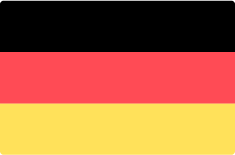Reflection describes a physical phenomenon in which light waves are reflected back from a boundary surface. The classic example is the mirror. Retroreflection is a technical term that describes the way in which light is reflected by the material. In common usage, the terms reflective and retroreflective are used as synonyms.
Principle of retroreflection
Retroreflection occurs when light rays are reflected back in the direction from which they came. They therefore send the light back to the irradiating light source. Imagine a bicycle at the side of the road. A vehicle is driving towards it with its headlights on. If this bicycle is equipped with spoke reflectors or the rider is wearing clothing made of retroreflective material (high-visibility waistcoat), a large amount of the reflected light will be reflected back towards the original light source, e.g. the vehicle headlights. This improves the recognition of the bike or person by the driver and thus also increases the possible reaction time for the driver so that a dangerous situation does not arise.
Well-known manufacturers of high-quality reflective films are 3M™ and Orafol® (manufactured in Germany) and Avery (manufactured in the USA). The strength of the retroreflection depends on the structure and the reflection class of the reflective tape as well as on the ambient conditions.
The structure of reflective films is divided into glass sphere reflective films (exposed - structure A or encapsulated - structure B) and microprismatic reflective films (structure C). Glass spheres produce a broader light scattering, microprismatic films a bundled, more intensive reflection.
Reflectance classes are given in RA1, RA2 or RA3 and are an indicator of the level of reflectance (candela/lux per m²). In addition, it can be generalised that the darker the surroundings, the stronger the measurable reflection.
You can find more information on the reflection classes under the keyword 





